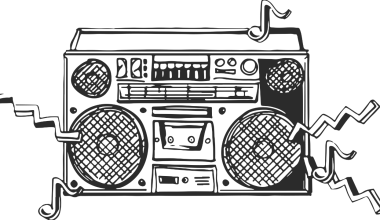Do you ever wonder who listens to your songs or why one song gets more love than another? That’s where music streaming analytics comes in. It’s like a treasure map for your music career, helping you find out what’s working, what’s not, and how you can do better.
In simple words, music streaming analytics gives you the data and insights to understand your audience. Whether you’re an independent artist or a seasoned musician, this data helps you connect with your listeners and take your career to the next level. Let’s dive into how it works and why it matters!
What Are Music Streaming Analytics?
Music streaming analytics is the data collected when people listen to your songs on platforms like Spotify, Apple Music, and YouTube. It shows you numbers like:
- How many people listened to your song.
- Where your listeners are from.
- What age group listens to your music the most.
- Which playlists feature your songs.
Think of it as your music’s report card. It tells you what’s going well and what needs a little work.
Why Music Streaming Analytics Matters to Artists
In today’s world, making good music isn’t enough. You need to know who’s listening to it and how to reach more people. Music streaming analytics can help you:
- Find Your Fans: Know where your biggest supporters live so you can plan concerts or target ads in those areas.
- Track Success: See which songs people love and which need a boost.
- Plan Your Releases: Learn the best times to drop new music to get maximum attention.
- Get on Playlists: Playlists can make or break a song. Analytics helps you understand how to pitch your music better.
For example, if you discover most of your listeners are teenagers, you can focus your efforts on platforms they use the most, like Instagram and TikTok.
Breaking Down Music Streaming Analytics: Key Metrics You Should Know
Here are some of the most important things to look for in your streaming data:
1. Total Streams
This is the total number of times your song has been played. It’s a great way to measure overall popularity.
2. Monthly Listeners
This tells you how many unique people listened to your music in a month. It’s different from total streams because one listener might play your song multiple times.
3. Listener Demographics
Find out your fans’ age, gender, and location. For example, if most of your listeners are in Mumbai, you might want to plan your next gig there.
4. Playlists
See which playlists feature your songs and how many people discovered your music through them. Getting on popular playlists can boost your streams quickly.
5. Retention Rate
This shows how long listeners stick around. Are they listening to your entire song or skipping halfway? A low retention rate means you may need to tweak your song’s intro.
Tools to Help You Understand Music Streaming Analytics
Many platforms offer free tools for artists. Here’s a quick look at some popular ones:
Spotify for Artists
This tool lets you see your streams, listeners, and playlist features. It even shows you how fans are finding your music.
Apple Music for Artists
Apple Music provides details on listener demographics and lets you see how many people discovered your music through Shazam.
YouTube Analytics
This is perfect for tracking video performance. You can see watch time, audience location, and even how people found your videos.
SoundCloud Insights
SoundCloud offers analytics for indie artists, showing who’s playing your tracks and which countries are streaming them the most.
How to Use Music Streaming Analytics to Grow Your Audience
Here’s how you can use all this data to reach more listeners:
1. Focus on Your Biggest Fans
If most of your streams come from a certain city, you can plan concerts, meetups, or even online campaigns targeting that area. For example, if your analytics show that Delhi loves your music, you can run ads on Instagram for fans there.
2. Plan Better Releases
Look at when your listeners are most active. If they usually stream more on weekends, release your songs on a Friday for better impact.
3. Get Playlisted
Playlists are the holy grail for artists. If you notice one of your songs is performing well, pitch it to curators of similar playlists. Use your analytics to show them why your track deserves a spot.
4. Collaborate Smartly
If your analytics show that your fans also listen to a particular artist, try collaborating with them. It’s a win-win for both artists as it brings new listeners to both.
5. Experiment with Marketing
Try running different campaigns and check what works best. For instance, you can create a teaser video for Instagram or host a live Q&A session. Use your analytics to see which efforts drive the most engagement.
Real-Life Examples: Artists Who Used Analytics to Succeed
Case Study 1: Independent Artist in India
An indie artist in Bengaluru noticed most of their listeners were from Maharashtra. Using this insight, they started running Marathi-language ads on Facebook, which led to a 40% increase in streams.
Case Study 2: International Collaboration
A rising artist in the UK saw through Spotify analytics that many of their listeners also enjoyed Indian music. This led them to collaborate with an Indian singer, creating a fusion track that performed well globally.
Challenges of Using Music Streaming Analytics
While music streaming analytics is powerful, it does come with challenges:
- Too Much Data: For beginners, the sheer volume of numbers can feel overwhelming.
- Different Metrics on Different Platforms: Spotify and Apple Music don’t track the same things, so comparing data can be tricky.
- Time-Consuming: Analyzing data takes time, especially if you’re doing it alone.
The good news? With practice, it gets easier. And if you’re feeling stuck, there are professionals who can help.
The Future of Music Streaming Analytics
As technology evolves, music streaming analytics will become even smarter. Tools will predict trends, recommend marketing strategies, and even suggest what kind of music you should create based on listener behavior.
Imagine getting a notification saying, “Your listeners love upbeat tracks. Consider releasing a dance song next!” That’s the future of analytics—empowering artists to make data-driven decisions.
Simple Steps to Start Using Music Streaming Analytics Today
- Sign Up for Analytics Tools: Start with free tools like Spotify for Artists.
- Set Small Goals: Focus on one metric at a time, like increasing your streams or growing your listener base in a specific city.
- Check Your Data Regularly: Spend 10 minutes every week reviewing your analytics.
- Experiment and Learn: Try new strategies like collaborations or targeted ads and see what works.
Conclusion: The Power of Music Streaming Analytics
Understanding music streaming analytics might sound technical, but it’s really about knowing your fans and making smarter choices. The insights you get can help you connect with your audience, grow your fan base, and even boost your income.
Whether you’re an indie artist just starting out or a seasoned performer, taking the time to learn analytics is a game-changer. So why wait? Dive into your data today and watch your music career take off!
Related Articles:
For further reading, explore these related articles:
- How to Create a Music Portfolio That Tells Your Story
- Ultimate Guide to Songwriting Tips for Beginners
For additional resources on music marketing and distribution, visit DMT RECORDS PRIVATE LIMITED.






